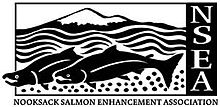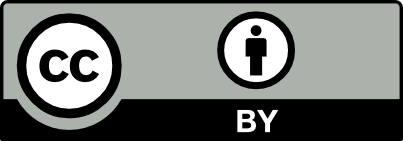Where Have All the Glaciers Gone?

NSEA logo
Goodness Gracious, Where Have All the Glaciers Gone?
Download lesson file:
Subject
Earth and Human Activity
Objectives
The students will:
- Understand the meaning and components of climate change
- Engineer and model how greenhouse gasses cause heat trapping
Materials
You will need outdoor space and a sunny day for the following activity:
- Open White Board Space
- 1 ice cube as a control and 1 additional ice cube per group, ~10
- Engineering kits (one per group):
- Scissors
- Scotch tape
- Cotton balls (x8)
- Paper plate
- Popsicle Sticks (x8)
- Index Cards (x2)
- 4” x 4” fabric piece
- Marker
- 1-gal zip lock bag
- Clipboards for each student
- Glacier Melt Work Sheet
- Official Request from Nooksack Salmon Enhancement Association, with model identification card printed on backside.
Size/Setting/Duration
Entire class/classroom and outdoor space/~1 hour
Background
Climate change is a term used to define global or regional climate patterns, in particular a change largely attributed to the increase in atmospheric carbon dioxide produced by the use of fossil fuels (oil, natural gas, coal, etc.). Fossil fuels are nonrenewable resources, or resources that cannot be replaced once they are used, and is the most common energy resources used by people to power phones, cars, buildings, etc. Renewable resources also exist and are often “cleaner” than nonrenewable resources. These include wind, solar, and hydro power. Renewable resources tend to be “clean” because they are reusable, whereas nonrenewable resources are utilized vis the burning of fossil fuels that cannot be re-burned to create more energy.
Sunlight reaching the Earth can heat the land, ocean, and atmosphere. Some of that sunlight is reflected back to space by the surface, clouds, or ice. Much of the sunlight that reaches Earth is absorbed and warms the planet. Burning fossil fuels emits carbon dioxide in the air. Carbon dioxide is important for the Earth because it traps the sun’s warmth and allows life on Earth to flourish. However, as our population grows, we are burning more fossil fuels and producing more carbon dioxide, which acts as a heat trapping blanket, causing warmer temperatures than ever recorded and odd weather patterns.
A glacier is a slowly moving mass of ice known as ‘rivers of ice’ that is formed by the accumulation and compaction of snow on mountains. The North Cascades are home to over 300 glaciers and countless snow fields. Glaciers in the North Cascades melt to form rivers that will empty into the sea, including the Nooksack River! However, due to climate change glaciers are melting faster and some are vanishing due to wetter winters with less snowpack and drier summers with high heat. Less snow pack means high flows in the winter and spring and low flows that dry up in the summer and fall.
Procedure
1. Begin the lesson by presenting the phenomenon:
Did you know that the North Cascades, which surround Mt. Baker, has the most glaciers of anywhere else in lower 48 states? However, glaciologists, people who study glaciers, have noticed that these glaciers are melting. As scientists who live close to so many glaciers, the Nooksack Salmon Enhancement Association (NSEA) has asked for your help in determining why the melting is happening! Read the official request to students out loud.
We will be designing an experiment using ice cubes. Each ice cube will represent a different glacier in the North Cascades. There will be one ice cube without any influence (our control). It is your mission to use a collection of materials to melt your team’s ice cube faster than the control. By seeing what influences might be melting the glaciers, NSEA hopes that you can explain why the beautiful glaciers in the North Cascades are melting.
2. Explain to students that they will be working in pairs to design their models and will make observations every 15 minutes. Student will have to work with three limits on their designs:
a. Only
the materials provided can be used to melt the ice.
b. The
ice cube must lay flat on the outdoor surface, because glaciers are natural and
only have the Earth under them, so the ice cube must be the same.
c.
Students must be able to see their ice cube in
order to make observations over time.
3. Break students into teams of two (~10 teams), and then split the class into two larger groups (group A and group B – approximately 5 teams in each group).
a.
Utilizing two different types of surfaces in your
outdoor space (i.e. grass vs concrete).
Place group 1 on the non-natural surface (i.e. concrete) and group 2 on
the natural surface (i.e. grass) without explicitly telling the students that
you are strategically placing them on different surfaces.
b.
Each student should be given the Glacier Melt
worksheet with a clipboard to record data.
c.
Give each team the ‘Official Request’ from the
Nooksack Salmon Enhancement Association so that they have all the directions in
front of them in case they forget.
d.
Have students utilize the backside of the
“Official Request” to sketch their model, name their model, and identify group
A or B. Have students display
identification cards next their model.
e. If
students have extra time during any part of the experiment they can begin
answering questions 1 & 2 following the worksheet.
4. Allow students 15 minutes to design and construct their model.
5. Start timer. Hand out ice cubes. Students can place their ice cube in their design and make their first observation of both their own ice cube and the control ice cube on their worksheet. Students have 15 min to rotate to other models in their group, recording observations of models and ice cube changes on data sheet.
6. At 15 min on the timer, have students make their second observation of their own model and the control. Then have students switch to the opposite group and record observations of models and ice cube changes (group A looks at group B models, while group B looks at group A models).
7. At 30 min on the timer, have students return to their own model and record final observations about their own ice cube and the control ice cube.
8. Discuss as a class the following questions.
a.
What did they notice about their models?
b.
What was different about group A and group B?
c. How
do surfaces impact the heat of their models?
9. Have students use this discussion to answer question 1 of the Glacier Melt Worksheet.
10. Bring students back into the classroom and show students this 2 minute to familiarize students with the effects of burning fossil fuels and the idea of heat trapping.
a. Discuss video and the various aspects of climate change – such as carbon dioxide gasses that have a similar effect on glaciers as their models had on the ice cubes. Carbon dioxide is important for us as it has made the Earth warm enough to support life. However, human activity (such as burning fossil fuels) is causing great carbon dioxide emissions, which makes the “heat trapping blanket” around the Earth warmer. Scientists predict many negative effects as a result of these changes in temperature and people are already being affected.
i. What do these results tell us about glaciers, snow pack, and ice caps?
ii. Have students answer question 2 on Glacier Melt Worksheet on their own, then list ideas as a class that can help reduce the emission of carbon dioxide (e.g. reduce energy use by turning off lights when you leave a room). Encourage students to go home and talk to their family about these opportunities.
Next Generation Science Standards
|
Performance Expectation |
||
|
4-ESS3-1: Obtain
and combine information to describe that energy and fuels are derived from
natural resources and their uses affect the environment. |
||
|
Scientific and Engineering Practices |
Disciplinary Core Ideas |
Crosscutting Concepts |
|
▪ Constucting Explanations and Designing Solutions ▪ Obtaining, Evaluating, and Communicating Information ▪ Developing and using models |
▪ ESS3.A: Natural Resources ▪ ESS3.C: Human Impacts on Earth Systems ▪ ESS3.D: Global Climate Change
|
▪ Cause and Effect ▪ System and system models
|
NGSS Lead States. 2013. Next Generation Science Standards: For States, By States. Washington, DC: The National Academies Press.
Extension Resources:
Local Mt. Baker Glacier Study - https://glacierchange.wordpress.com/tag/mount-baker-glacier-retreat/
Media links for WA State glacier recession - https://glacierchange.wordpress.com/2018/04/15/north-cascade-glacier-climate-project-media-links/
Bellingham Herald Article - https://www.bellinghamherald.com/news/local/article32632344.html
Nooksack Tribe Report - https://cpb-us-e1.wpmucdn.com/blogs.uoregon.edu/dist/c/389/files/2010/11/Nooksack_Rivers-and-Glaciers_Profile_7-24-2014-2cpunfl.pdf
License and Attribution

CC BY logo
Except where otherwise noted, this work by Nooksack Salmon Enhancement Association
(www.n-sea.org) is licensed under a Creative
Commons Attribution License. All logos and trademarks are the
property of their respective owners.
If this work is adapted, note the substantive changes and re-title, removing any Nooksack Salmon Enhancement Association logos. Provide the following attribution:
This resource was adapted from Goodness Gracious, Where Have All the Glaciers Gone by Nooksack Salmon Enhancement Association and licensed under a Creative Commons Attribution 4.0 International License. Access the original work for free in the ClimeTime group on the OER Commons Washington Hub